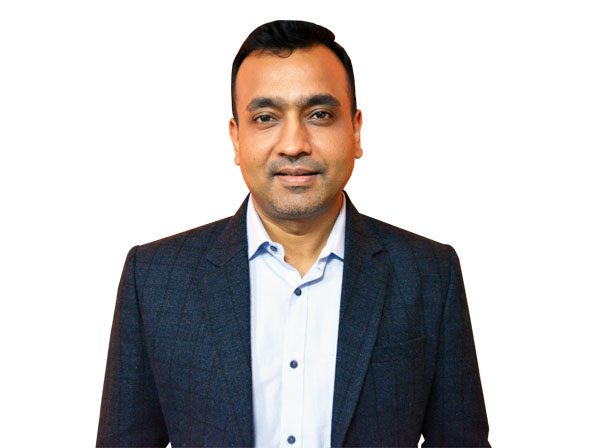
Click to learn more about author Chetan Alsisaria.
How can the HR function intelligently respond to the ongoing crisis and use technology to create a blended workforce? The article is a deep-dive on how predictive analytics can help the HR unit revolutionize the future of the blended workforce.
As companies begin to reopen and resume work, they will have to deal with a new challenge — that of managing a blended workforce composed of remote employees, onsite employees, contractors, etc. In such a scenario, how can HR professionals develop strategies tailored to manage this new blended workforce to enable greater employee engagement? While no-one-size-fits-all, we have seen that in instances where there is greater adoption of technology in HR, enterprises function more seamlessly. According to a 2020 Human Capital Trends report by Deloitte, the power of the enterprise lies in its ability to leverage an environment that technology creates to humanize the world of work. The challenge going forward is to address how organizations can remain human in a technology-driven world.
The Power of Predictive Analytics
The historical focus of applying technological tools such as analytics to HR was low. However, this is changing, and HR has earned a seat at the table with the rise of people analytics. Predictive analytics tools — a branch of advanced analytics — has also arrived in HR and helps businesses to extract vital information from data sets to discover patterns, forecast trends to anticipate the future, and make the right decisions. It helps analyze data related to performance measurement, workforce planning, employee behavior, employee mobility, recruitment, and retention.
In the movie “Moneyball,” Oakland Athletics’ General Manager Billy Beane utilized predictive analytics to evaluate his potential baseball roster by identifying statistics that were predictive of how many runs a player would score. His efforts proved to be highly effective, resulting in him producing a successful team despite operating under budget constraints. Beane’s remarkable story resonates with the importance of predictive analytics and its business advantage.
Predictive analytics measures efficiency, effectiveness, and outcomes, enabling HR to guide future strategic decisions, help identify employees by performance bands, analyze employee churn rate, address learning and development needs, close the skills gap, identify the best culture-fit and cost of hire, and optimize evidence so that one doesn’t lose out on opportunities. For instance, predictive analytics can help draw the connection between these three types of measurements; by identifying the cost per hire (efficiency), the quality of hires (effectiveness), and employee performance (outcome).
Due to the ongoing pandemic, predictive analytics has become extremely pertinent to incorporate into an organizations’ business strategy. The pandemic has undoubtedly led to unprecedented job losses resulting in many candidates applying for the same job. In such a scenario, shortlisting candidates — remote workers, contractors, full-time, etc. — without predictive analytics becomes difficult. Predictive analytics can also help HR leaders gauge the level of motivation of a candidate during the application process. In this new environment, where a blended workforce is becoming more prevalent, how can HR manage the challenges of our times and help us understand what drives results?
Applications of Advanced Analytics for a Blended Workforce
By applying advanced analytics, enterprises can begin to look at KPIs — for example, work-completion — and break it down across categories, such as full-time/part-time/gig-workers, and analyze problem statements, whether it is a lack of training programs, process gaps, etc. Here are some applications of predictive analytics for a blended workforce.
Hiring the Right Talent: One of the biggest challenges for enterprises is hiring the right talent. Using predictive analytics, businesses can identify “joining prediction” to maintain an objective view of the talent pipeline. Additionally, a host of challenges, which tend to be a costly affair if one maps the per hour cost of all the stakeholders involved against a particular requisition, can be solved. Organizations can also use hiring assessments in order to predict fitment.
Employee Retention and Engagement: When it comes to employee retention, enterprises can use predictive analytics to predict employee duration based on the resume, market, and an organization’s own internal parameters. Additionally, by training predictive models to spot deviant behavior, organizations can save huge dollars that go up when retaining and training an incoming/joining employee. For instance, Google estimates the probability of an employee leaving the company by applying predictive analytics. One of their findings is that a new salesperson is much more likely to leave the company if they do not get a promotion within four years.
Learning and Development: Training programs, if implemented well, can result in improved retention rates. In addition to customizing training content, companies can use advanced analytics to provide individual recommendations for their employees in the form of feedback, promotions, etc., which the system identifies on the basis of job responsibilities. Predictive analytics can further suggest whether training is required for a particular employee based on various parameters at the individual and peer-group level as well as the expectations at a particular job level, ultimately making the whole process of learning and development meaningful.
The Path Ahead
The combination of analytics and AI can provide for a better way to master blended workforce planning and management. For example, predictive analytics can now help analyze patterns for time management from email/calendar data, which can help to manage a dispersed workforce. Additionally, AI tools can now analyze video interviews to determine employee interest and honesty. Technologies that enable monitoring, feedback, gamification, and personalization will continue to play a big role in managing a blended workforce. Going forward, HR leaders will continue to rely on data to take action that will drive productive business outcomes, giving them a competitive advantage.
